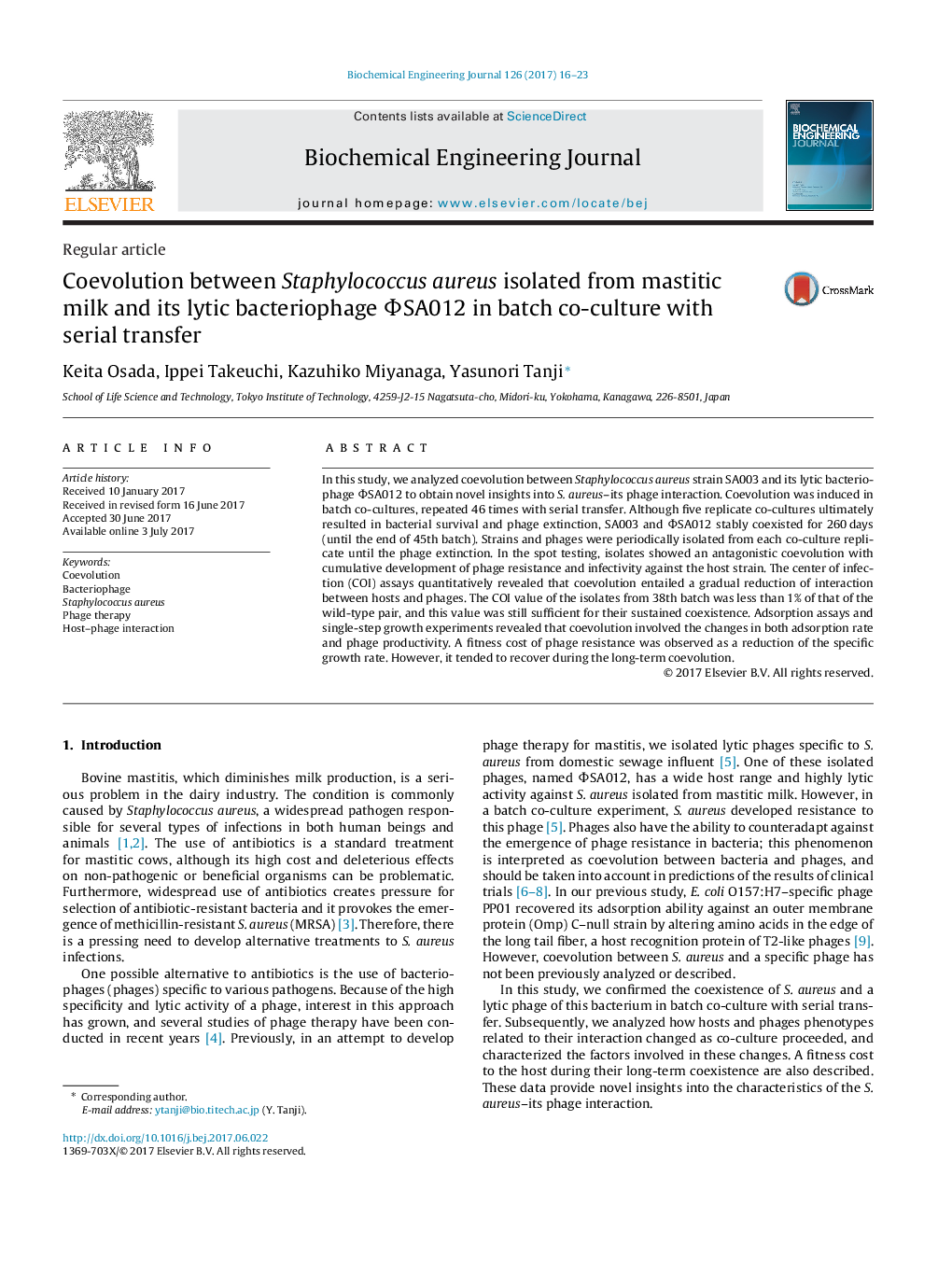| Article ID | Journal | Published Year | Pages | File Type |
|---|---|---|---|---|
| 4752066 | Biochemical Engineering Journal | 2017 | 8 Pages |
â¢Coevolution between S. aureus strain SA003 and its lytic phage.â¢Coevolution was induced in batch co-cultures, repeated 46 times with serial transfer.â¢Coevolution entailed gradual reduction of interaction between hosts and phages.â¢Coevolution entailed changes in both adsorption rate and phage productivity.â¢Provide novel insights about the characteristics of the host-phage interaction.
In this study, we analyzed coevolution between Staphylococcus aureus strain SA003 and its lytic bacteriophage ΦSA012 to obtain novel insights into S. aureus-its phage interaction. Coevolution was induced in batch co-cultures, repeated 46 times with serial transfer. Although five replicate co-cultures ultimately resulted in bacterial survival and phage extinction, SA003 and ΦSA012 stably coexisted for 260 days (until the end of 45th batch). Strains and phages were periodically isolated from each co-culture replicate until the phage extinction. In the spot testing, isolates showed an antagonistic coevolution with cumulative development of phage resistance and infectivity against the host strain. The center of infection (COI) assays quantitatively revealed that coevolution entailed a gradual reduction of interaction between hosts and phages. The COI value of the isolates from 38th batch was less than 1% of that of the wild-type pair, and this value was still sufficient for their sustained coexistence. Adsorption assays and single-step growth experiments revealed that coevolution involved the changes in both adsorption rate and phage productivity. A fitness cost of phage resistance was observed as a reduction of the specific growth rate. However, it tended to recover during the long-term coevolution.
